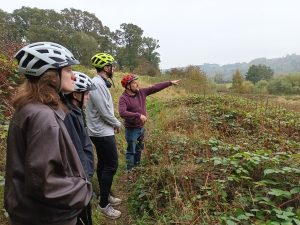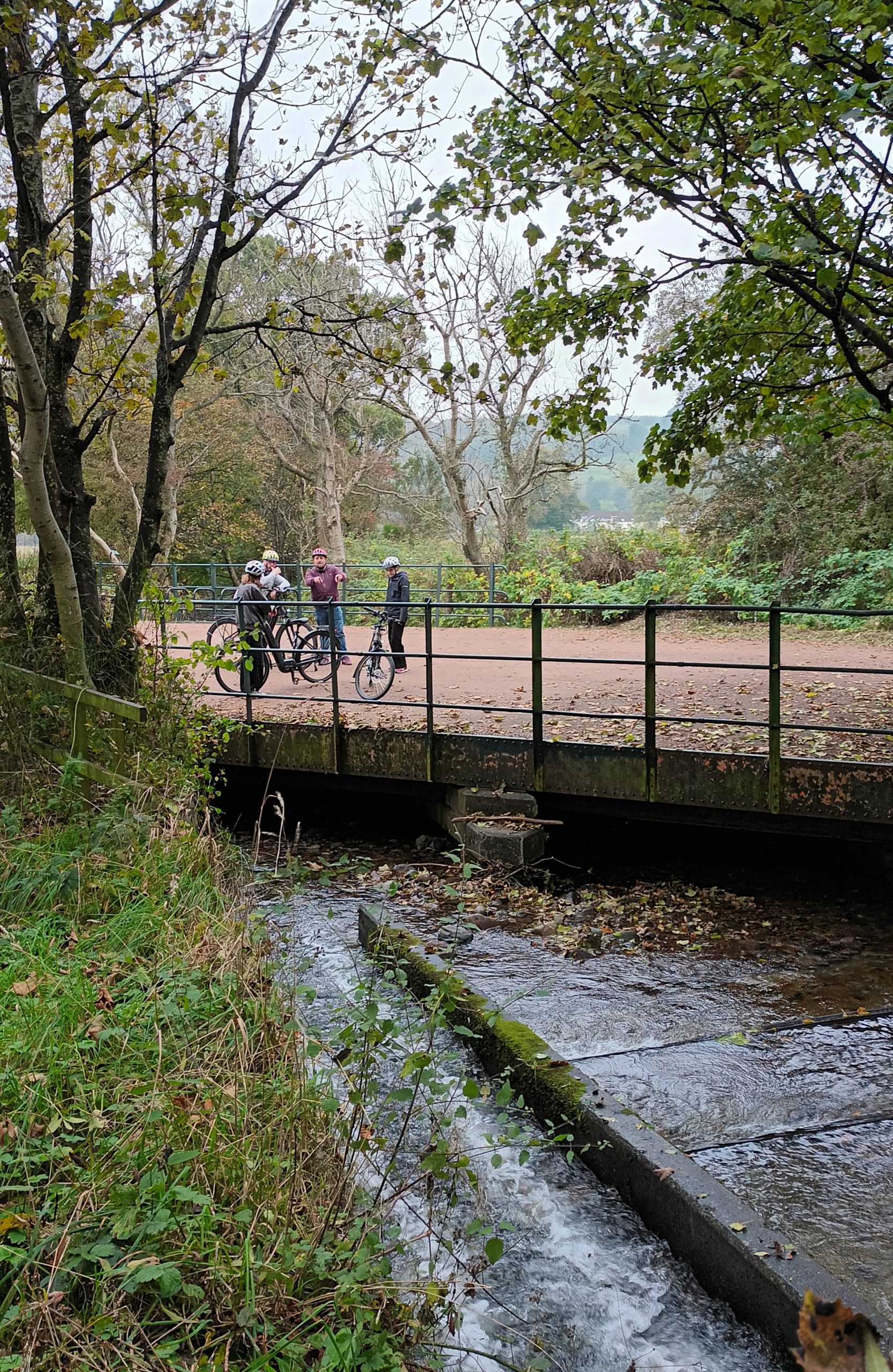Flood Resilience event & Bike Ride: Guest Blog

Guest blog and photos by Ross, a local Clackmannanshire resident. Thanks Ross!
Today I went for cycle as part of FEL’s Clackmannanshire Flood Resilience event, joining others on a ride from Tillicoultry to Dollar along the former railway line. As someone who grew up in Dollar and now lives close by, I know the route intricately having walked and cycled the route hundreds of times and walked the family dogs along the Devon in all weather conditions over the years.

As we made ready to set off on our cycle and I chatted to the group leader, we realised that I had some unique knowledge of the route and the things we would see on the way. Asked if I would be happy sharing some of this with the group we decided to include a few stops to talk about the issues, impacts and challenges that could be seen.
Over the course of our short E-powered cycle we were able to talk about the former industrialization of the Devon valley, and how water management had played a key part in the development of the towns in the area, from the woolen mills and bleaching works, coal mines and brick factories, to the former rail-route we were following.

We were also able to spot patches of invasive species; mostly Himalayan Balsam and Japanese Knotweed which allowed us to talk about why these plants require control and management. This highlighted that others in the group knew the names, but maybe weren’t sure of which plants these were, or that they didn’t understand how these plants affected our rivers.
As a former employee of the Forth Rivers Trust I know there is work taking place on the Devon to remove invasive species. Over the last three years, they have been targeting Knotweed, with controlled stem injecting, and Balsam through group “Balsam Bashing Days” which the public can get involved with. Control of these species on our rivers starts at the top of the catchment and works its way down, hopefully ensuring that areas cleared will not be reseeded in subsequent years by seeds being washed downstream. Check out the work of the FRT and their Devon project on their website.

Harder to spot were some signs of beaver activity, including gnawed branches toppled into the water and a mud-built dam blocking a small side channel. An interesting opportunity to compare the needs of humans and wildlife as both seek to manage the river flow for their own benefit, and a great chance to get people thinking about how maybe we had shared goals. After all we both want a clean and healthy river that doesn’t flood our homes come winter.
Returning to our start point, the group reflected on the vast range of topics we had touched on, concluding that there’s always more to learn about our rivers. So, the next time you’re thinking of an interesting place to go, I’d recommend taking a trip along your local river and have a think about some of these topics.
